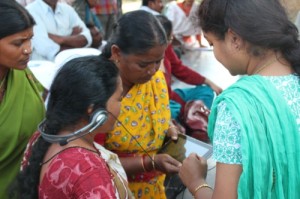Health-education package to prevent worm infections in Chinese schoolchildren. N Engl J Med. 2013 Apr 25;368(17):1603-12. doi: 10.1056/NEJMoa1204885.
Bieri FA, et al. Queensland Institute of Medical Research, Herston, Australia.
BACKGROUND: Soil-transmitted helminths are among the most prevalent sources of human infections globally. We determined the effect of an educational package at rural schools in Linxiang City District, Hunan province, China, where these worms are prevalent. The intervention aimed to increase knowledge about soil-transmitted helminths, induce behavioral change, and reduce the rate of infection.
METHODS: We conducted a single-blind, unmatched, cluster-randomized intervention trial involving 1718 children, 9 to 10 years of age, in 38 schools over the course of 1 school year. Schools were randomly assigned to the health-education package, which included a cartoon video, or to a control package, which involved only the display of a health-education poster. Infection rates, knowledge about soil-transmitted helminths (as assessed with the use of a questionnaire), and hand-washing behavior were assessed before and after the intervention. Albendazole was administered in all the participants at baseline and in all the children who were found to be positive for infection with soil-transmitted helminths at the follow-up assessment at the end of the school year.
RESULTS: At the follow-up assessment, the mean score for the knowledge of helminths, calculated as a percentage of a total of 43 points on a questionnaire, was 90% higher in the intervention group than in the control group (63.3 vs. 33.4, P<0.001), the percentage of children who washed their hands after using the toilet was nearly twice as high in the intervention group (98.9%, vs. 54.2% in the control group; P<0.001), and the incidence of infection with soil-transmitted helminths was 50% lower in the intervention group than in the control group (4.1% vs. 8.4%, P<0.001). No adverse events were observed immediately (within 15 minutes) after albendazole treatment.
CONCLUSIONS: The health-education package increased students’ knowledge about soil-transmitted helminths and led to a change in behavior and a reduced incidence of infection within 1 school year. (Funded by UBS Optimus Foundation, Zurich, Switzerland; Australian New Zealand Clinical Trials Registry number, ACTRN12610000048088.).





